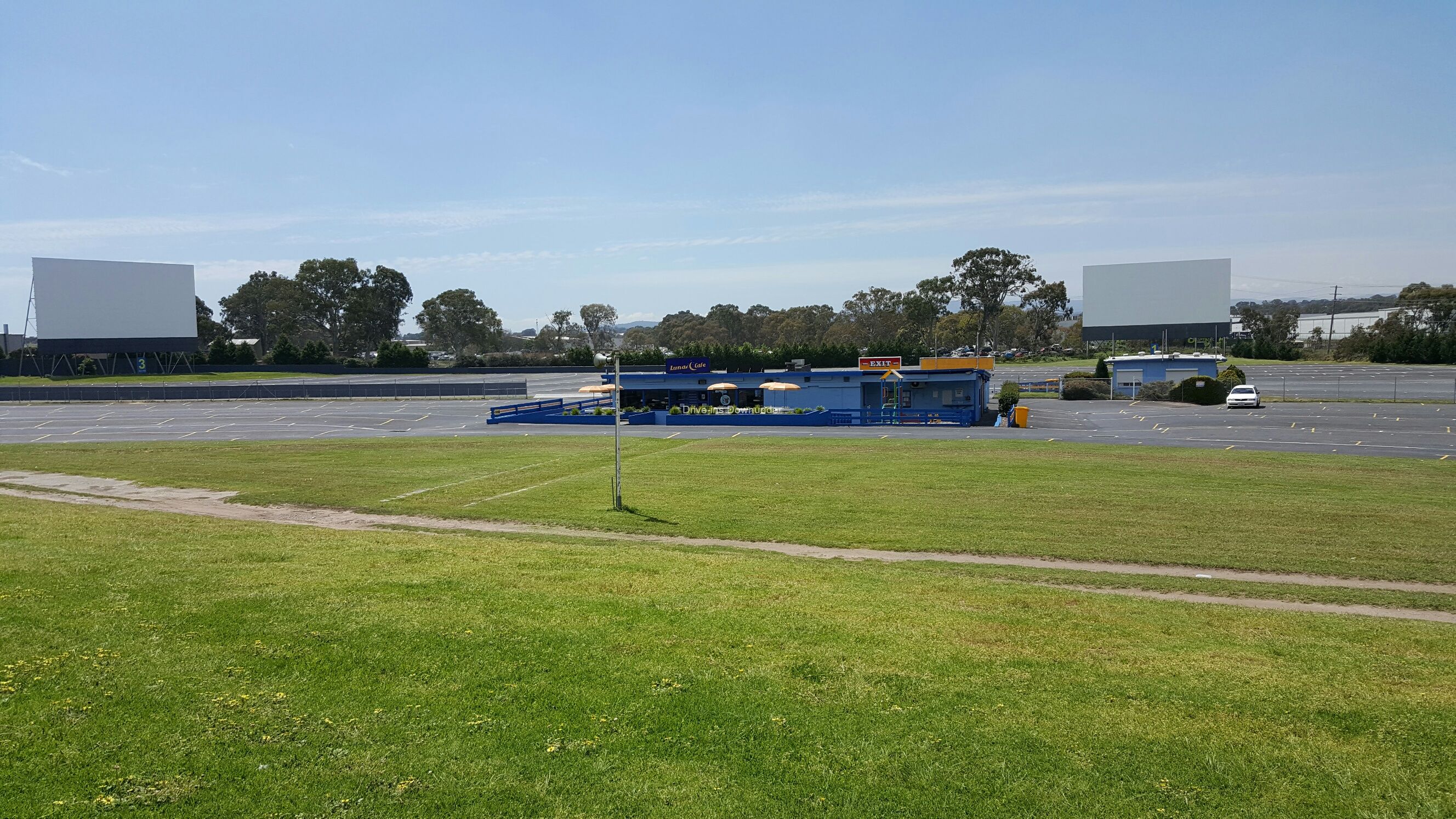
So you want to build a drive-in theatre?
Hardly a few months go by without someone asking (or telling) us that they want to build a drive-in theatre. I am sure it has appeal to many people, as it combines movies, cars, the outdoors and gobs of nostalgia. Drive-ins hark back to the simpler times of the good old days of a real, or imagined, past. It doesn’t look too difficult or expensive to operate and build; erect a large screen on a piece of land, sell some food and run some new movies, some classic old ones, and away you go. In Australia over the last 30-plus years several drive-ins have opened, or re-opened yet only a couple of them have remained open and shown any real signs of success. Why are they so difficult to build, operate and remain viable? Read on………

The information below is what is required to build the average drive-in. The estimations here are based on experience gained over a 35+ year period of working in, operating and building drive-in theatres. There are certainly smaller drive-ins and much larger drive-ins that push outside the requirements and cost range referred to here. Large drive-ins are often located near dense population centres and consist of 3 or more screens while small drive-ins may have only one screen and cater for fewer than 200 cars. The cost details here take into account drive-in operation in both Australia and North America, but there can be differences within both continents. Most drive-ins in Australia operate year round, whilst the majority in North America are seasonal. The information following is aimed at a general audience with an interest in drive-ins, however some of the technical terms mentioned may require further explanation.
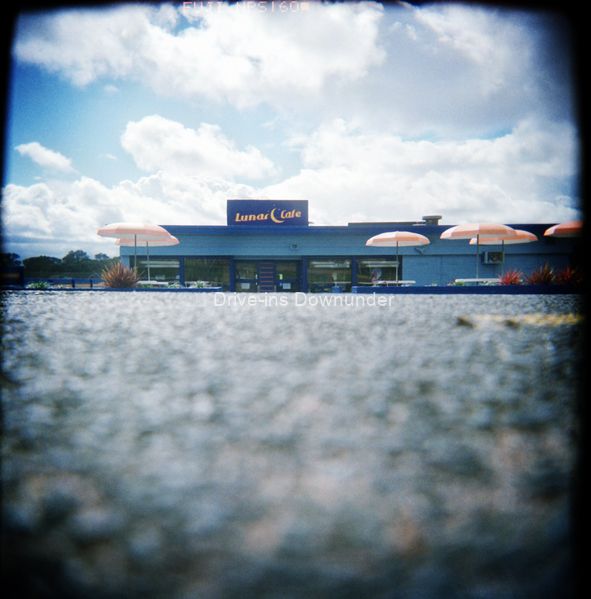
There are three main ways to get a drive-in up and running: buy one that is open, re-open a closed one, or build one from scratch. The first method is by far the best option; you have operating infrastructure, even if run-down, but it may not be where you want it to be and may not be for sale. The second option gives you greater scope as you will not be paying for goodwill, but even an existing location can involve a lot of effort and money to re-open. It also assumes you have local approvals to re-open it. Option three is building a drive-in from nothing but a piece of land. It is hugely expensive and complex to establish, even aside from leasing or buying the land itself, but is the method we are asked about the most. Indeed, the cost of buying or leasing the land required may in many cases be your single largest cost. There is certainly low cost land available, but most often the cost is low as it is remote and located far away from a viable population. The required infrastructure in most parts of Australia, and in many parts of North America, can require constructions that run to huge costs.
Let’s look at what is required infrastructure-wise for a drive-in. Today, unless you plan on a Summer-only operation in a rural location (as operated in many snow belt parts of the US and Canada), you will realistically need at least two screens and a minimum of 8 – 10 acres of land. Current release movies have contracts that stipulate minimum screening seasons and screening times, so a single screen drive-in may be stuck with a new release movie for 3 weeks or more. Additional screens allow you to bring in more product and keep your offering fresh, which today’s audiences require.

The screens themselves can cost anywhere from $50,000 up to $250,000+ depending on what your local authorities require and the size of the screen. Very few people have the knowledge and expertise to design and build a drive-in screen of sufficient size that will perform well technically and be compliant with local laws. Most areas will require a fully engineered and wind-load compliant screen made of steel and anchored in concrete. If you know a better way, then that is a great advantage. A drive-in screen built today, or in recent decades, is typically 50 to 100 feet (15 – 28 metres) wide. The screen surface (where the images are projected onto) needs to start at least 15ft or 5 metres from the ground depending on the lay of the land. Ideally around double this is required. This is so cars can see past SUVs with open rear hatches parked in front of them. In 2019 some sessions, particularly those which draw families, can attract over 75% of SUVs or tall vehicles, most of which will reverse in and watch the screen via an open hatch or tail-gate. The height of the screen is determined by the width as movies today are produced in two aspect ratios: Widescreen/flat and Scope which have aspect ratios of 1.85:1 and 2.39:1 respectively. Drive-ins don’t have moveable screen masking so your screen needs to be somewhere between those two aspect ratios. Most were traditionally close to the scope aspect ratio of 2.39:1 with the most common aspect ratio being between 2.0:1 and 2.2:1. Regardless of the aspect chosen, there will always be a compromise of cropping vs blank screen – there always has been at a drive-in and always will be.

You will need a snack bar/amenities building that is also compliant with your local health dept. and comprise of the correct number of men’s and ladies’ toilets. A typical 500 car drive-in may require up to 8 ladies’ toilet cubicles as well as accessible cubicles for wheelchair bound customers. You’ll need a food serving area, a food preparation area as well as refrigerated, frozen and dry storage areas. You will need a cleaning storage area too. There is a science to preparing and serving food for a large audience in the short pre-show window before the feature commences. You will need to decide on a serving system; self serve or counter service. You will need to decide what your menu items will be and what cooking and display equipment you will need for it. What drinks will you offer? Will they be bottled or delivered via a fountain/post mix? How many fryers and grills will you need? How much food preparation bench space is required. Is ice cream or FCB (slushy/slurpy) to be offered and who will supply the equipment to produce and store it? What brand and size of popcorn machine will you buy? Even moderately sized popcorn machines and warming systems can easily run to over $10,000. Quality coffee machines are also expensive. Don’t underestimate the importance of your concessions area to profitability. A well laid out, efficient and attractive snack bar is an investment that will make you money. Conversely, poor design, time intensive or uninteresting facilities and unsold products will cost you dearly.
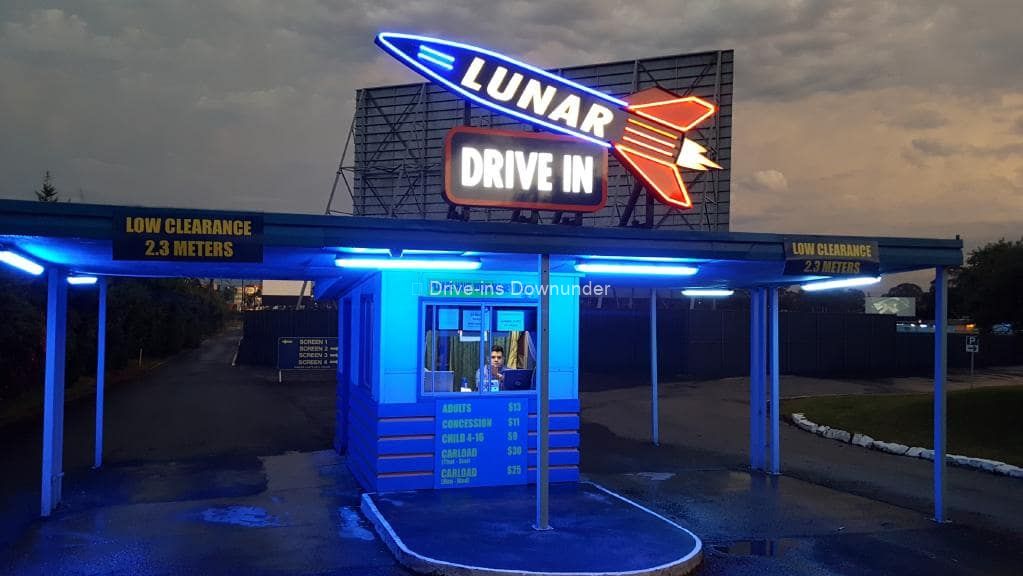
You’ll also require a ticket box building or buildings. Will you sell direct from a single ticket booth window? Will you have two or more entry lanes? Will you use carhops (remote sellers who work the car line)? Will the ticket box selling points be protected from rain or just open? Many film distribution companies will also require a computer based electronic ticketing system as a requirement to book films from them. EFTPOS or credit card terminals are almost essential today at both the ticket box and in the snack bar. If you choose the cash only method you will most likely require an ATM. Who will supply and service it? Don’t forget that any new commercial building costs far more to build than what a domestic house of the same size does. Unless you are a builder yourself, you’ll outlay hundreds of thousands to millions of dollars in erecting commercial food and amenities buildings that comply with local and state regulations.
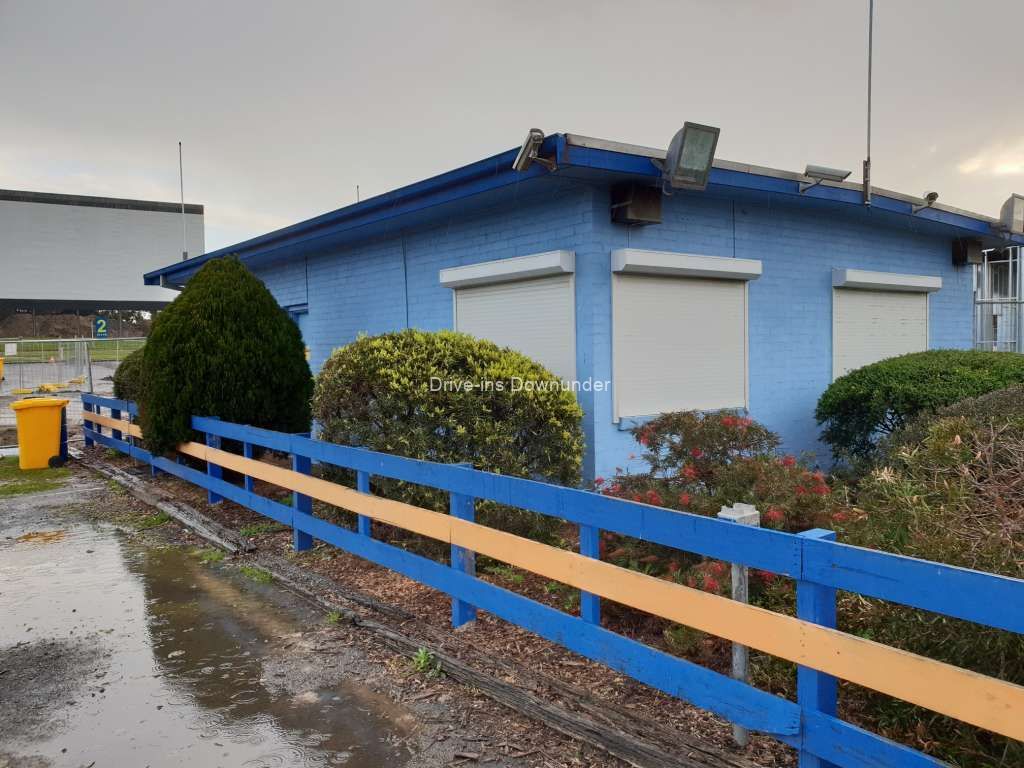
The projection box/room/booth in many ways is the heart of the operation. This can be incorporated above or next to your snack bar or exist as a separate building. It should ideally be located central to your screens and the number of screens will also determine its size and location. The throw (distance between the projector and screen) is typically between 160ft (50 metres) and around 650ft (200 metres), but there are exceptions to this where special projection lenses will be required. One important thing to remember is that it is the size of the screen surface NOT the throw that affects your screen brightness. e.g. an 80ft wide screen will have the same brightness if located 200ft or 400ft away from the projector assuming everything else is equal. 35mm film equipment is still found in many drive-in projection buildings, but since 2013 almost all of the movies distributed from both major and minor studios are delivered and screened digitally. The three main cinema/drive-in projector manufacturers today are Barco, Christie and NEC. These typically cost from $50,000 upwards for a projector with sufficient power for a drive-in screen. Used projectors are available but will most likely require major overhaul to regain the brightness they had when new. Xenon arc powered units are still mostly in use globally, but laser powered units are gaining in popularity. These come at an even greater cost however. Your projection building will also require a server or player for each projector and an FM transmitter to get the sound out to your cars. Speakers can be a great option for those who don’t have functioning FM radios in their cars, but are costly to install and maintain. A supply of portable hire radios are required for older classic cars and those with non functioning car radios. Many projection set-ups, especially in larger drive-ins, contain a library or LMS (a larger storage server that is connected to all projectors) and may also be connected to a Network Operations Centre- NOC that monitors your screenings. Movies, trailers and ads are delivered in the DCP (Digital Cinema Package) format and can be delivered via truck via a hard drive/USB or via cable or satellite. In short a basic drive-in projection equipment set-up can easily exceed over $70,000 per screen. There are a few short-cuts, but unless you can install, diagnose and repair this complex and often factory-sealed highly specialised equipment, expect to spend the money.
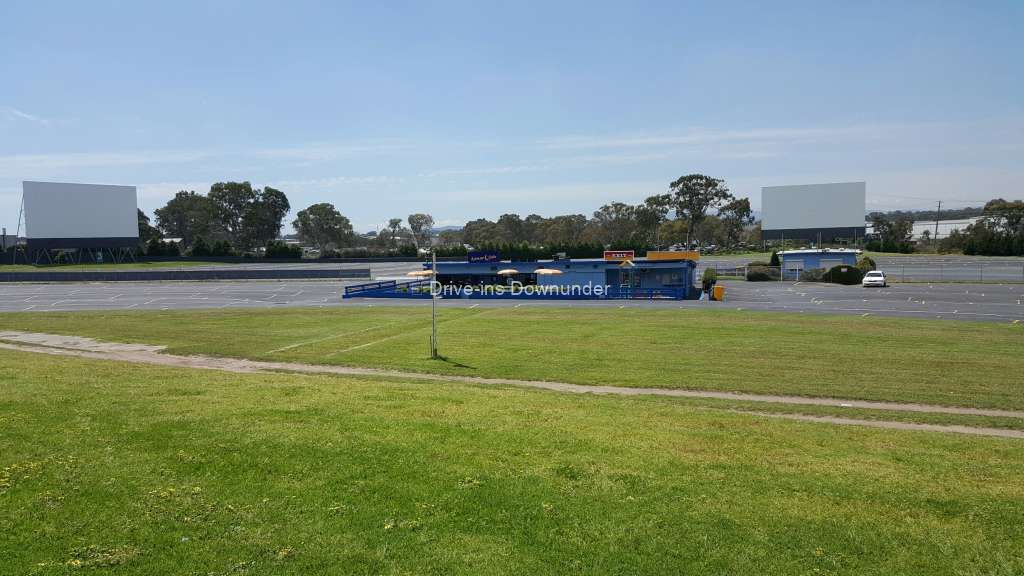
Ramps, roads and access are all boring, but can actually be the single biggest cost to building or upgrading a drive-in. Formed ramps are essential in drive-ins and the main reason that temporary drive-ins struggle. The simple mound of earth that makes a ramp is what angles your car up towards the screen. Without ramps the sight-lines can never be as good. The ramp is still very important for rear seat passengers particularly, although in many of today’s vehicles, tall front seats, rear vision mirrors and low roof turret design all contribute to difficulty in seeing the screen from the back seat. Ramps require large volumes of road base (crushed rock or aggregate) material to construct, simply scraping existing earth to form a ramp will result in both poor construction and drainage. Many areas will require a sealed surface of asphalt over the parking area to comply with local regulations and year-round operation. An asphalt surface is also the single best option for dust and mud abatement. Internal roadways have to deal with substantial traffic loads and will always require compacted material to a greater depth than that used in ramp construction. Access from the highway or major roadway may also require a slip lane or turning lane. If not already provided to the property, there can be substantial costs in working with your local road or highway authority in order to provide safe access to and from the drive-in. In short, even the minimum requirements for the surface of your drive-in can easily run into hundreds of thousands of dollars and in larger drive-ins with more onerous requirements, millions.
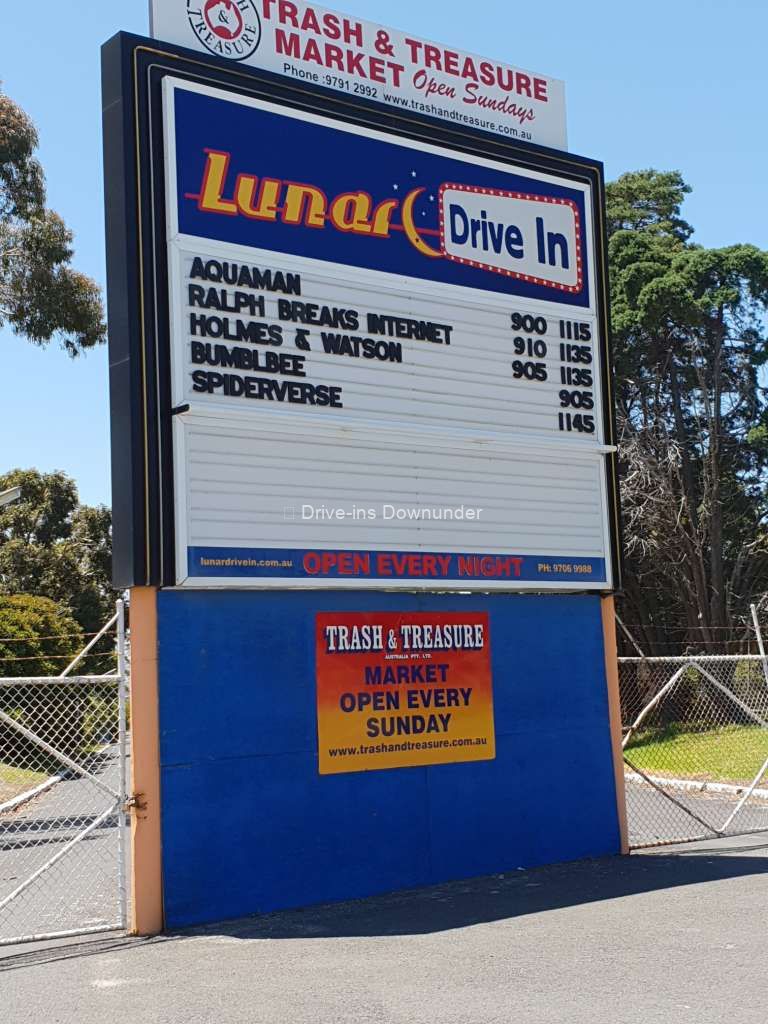
Signage, fencing and landscaping are required in every drive-in. A roadside attraction sign can range from a simple wooden pointer, to a giant illuminated neon construction with the current attractions listed. The budget can run from almost nothing to over $100,000. Fencing is an important and expensive requirement. You’ll need at least a 6ft high chain mesh fence as a minimum to stop easy free access to your theatre and in many areas a solid or shielded fence to stop free viewing from outside the property. Budget anywhere from $30,000 to well over ten times this amount. Landscaping may seem an unnecessary expense, but even the most basic lawn areas need to be mown and maintained. Nothing says that a drive-in is struggling more than overgrown grass and a poorly maintained sign with missing letters. Rubbish collection should be taken into consideration as you’ll need frequent pick-ups and an area for your large skip or dumpster, plus smaller bins for across the property.

Power, water, sewer, floodlights and data services are all required for any drive-in. The location may already have power, but you could be up for hundreds of yards or metres of trenching to get it where you need it. Getting power where you want it is cheap compared to getting connected to the sewer. No sewer nearby? Then you may have a challenge getting your local city or suburb to authorise a septic system for hundreds/thousands of people. Water will also need to be trenched into the property as will any data requirements for internet and phones. Floodlights are a necessity and must light the parking areas before and after the shows. You may choose to mount some floods on the buildings or screens themselves, but at least a couple of stand-alone floodlight poles or towers is almost always best.

Alarm systems and CCTV/security services should also be factored in. Public liability insurance, building insurance any local or land taxes – depending on whether you buy or rent the land will all add up. Always allow for continual maintenance and up-keep of buildings and surrounds.
Consultants and professional expertise will be likely be required, as there are very few people that are experts in everything, and almost nobody has the time to do it all.
Initial staff/management recruitment and training are also real costs. What happens if you put money and effort into training your staff and they leave? It’s a far better option than not training them and having them stay!

You may like to add a playground or other pre-show, non-screen entertainment like coin-operated amusements, mini-golf or other attractions. Outdoor seating under your screen or near your snack bar is a popular addition. A maintenance shed is generally required as a place to keep your lawn mower, line trimmers and other equipment items.
The information provided here now gives you an understanding of how complex a drive-in theatre can be. You’ll need every aspect to be built and designed well in order to compete in today’s ever more competitive out-of-home entertainment market. It’s not impossible to do; but it certainly isn’t the simple business that many people think it is. Now at least you know what awaits if you choose to go down the route of building a new drive-in.
In our next look at drive-in theatres, we’ll examine how to actually operate a drive-in theatre and the challenges of keeping one open in an era of ever more competition from inside and outside the home. What skills and experience are required, along with how to book films, provide food, manage staff, balance finances and promote your business.
David Kilderry 2019